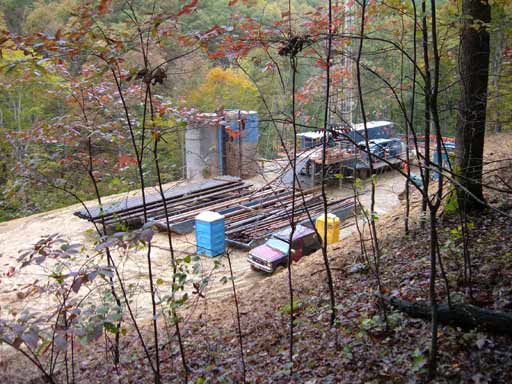|
 |
Slide 1 - Next |
Slide 1
This is a photograph of a typical gas well drilling site in West Virginia. (This view does not include the drilling “pit” down over the hill behind the drilling rig, which will be shown later.)
The drilling rig and its tower are on the right in the middle. Behind it is the “dog house” office etc. In the dead center, near the port-a-john is the supply of various sizes pipe/casing. In the rear are large tanks, probably for water to be used during “fracing”. On the near right, almost out of site is the air compressor whose function will be described later.
At various stages of the drilling other equipment will be brought in, such as the special cement trucks described later.
Note that this slide show will illustrate gas well drilling and not oil well drilling. That is because gas well drilling is far more common in West Virginia, and because the down hole measures in the two types of wells are essentially the same. The real differences occur after the drilling is completed and the well goes into production. A gas well will just have a “gathering” pipeline leading to market and some hardware and maybe a tank for incidental fluid that comes out of the gas well during production. An oil well will have a rocking pump jack that actually runs off and on during the many years of the production phase plus a large tank to store the oil until it can be regularly emptied into trucks and taken to market. These extra regular incursions onto the surface owner’s land make having an oil well on a surface owner’s land much more intrusive.
| Go directly to intro or slide: 1 2 3 4 5 6 7 8 9 10 11 12 13 14 15 16 17 18 19 20 21 22 23 24 25 26 27 28 28A 29 30 |